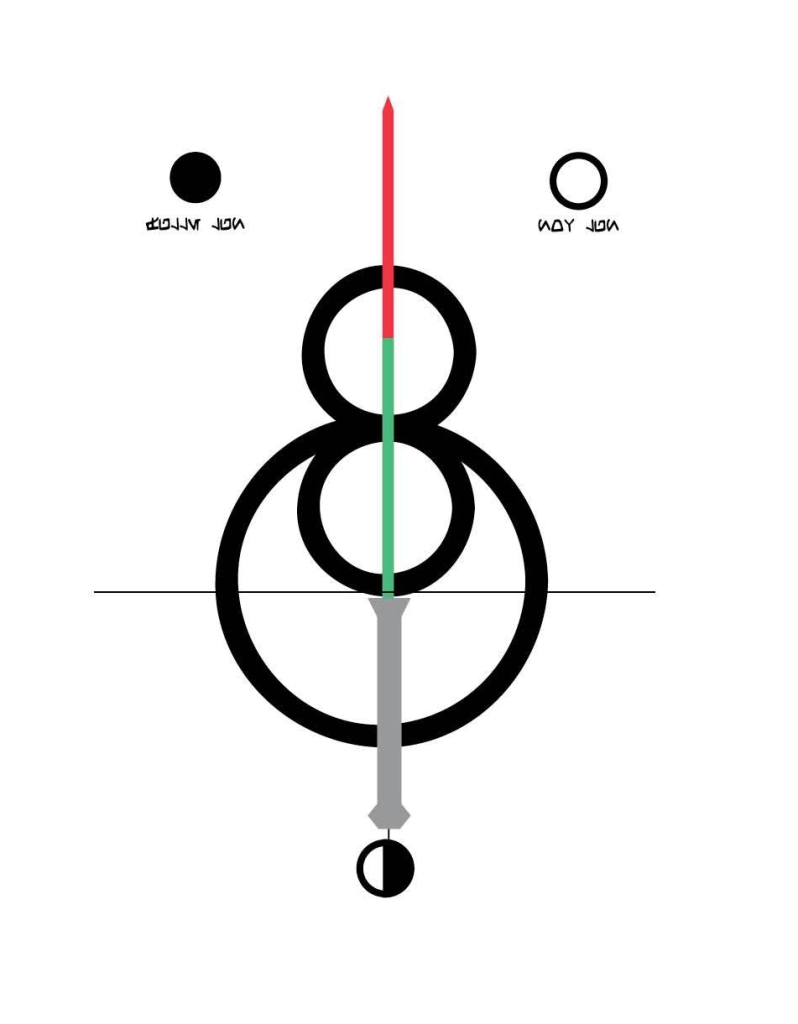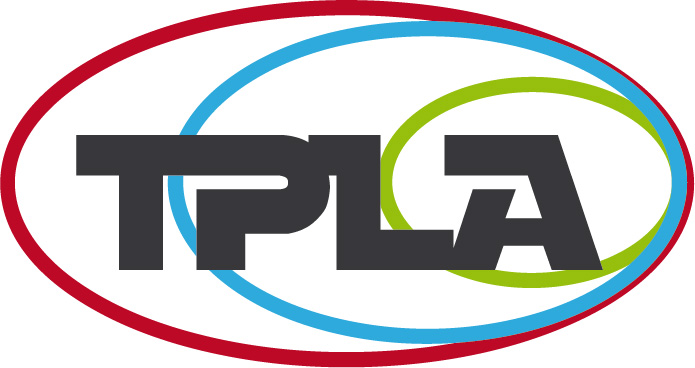Terra Prime was formed in 2012 with two friends who had been working on a way to bring different martial arts and combat sports together. Differing backgrounds have always been very insular in traditional circles and there is often a lot of nationalist, racial, and historical baggage that comes with them. This prevents people of totally different arts and experiences from meeting very much. The lightsaber provided a perfect analog for just that purpose.
Sword Lab
Terra Prime Lightsaber Academy owes its formation to the Sword Lab. Begun in 2010, this was the first venture into shared training and rule sets for the purpose of building more diverse communities. Taking cues from the similarities found in the Chinese arts and the European arts (especially with weapons) Sword Lab experimented with a few different types of practice weapon to find a good middle ground where all martial practices could meet. When introduced to the LED lightsaber with the removable poly carbonate blade, the road to lightsaber combat was short indeed.

Sword Lab still operates as an adjunct of the traditional backgrounds of TPLA members. With the explosion of new practice weapons and the means for making them, Sword Lab has been able to experiment with all kinds of traditional weapon combinations and uses. This is still the proving ground for everything TPLA puts into it’s lightsaber training material and techniques are constantly put through the experimental laboratory that is sparing. Basing things off a realistic origin is a huge priority at TPLA. The Sword Lab provides a wonderful research and development area for the fantasy and sci-fi weapons in which TPLA specializes.
Terra Prime Lightsaber Academy
The efforts of the Sword Lab formed the foundation of a philosophy: That martial arts, in particular weapon arts, are far more similar than they are different. By focusing training on the skills, ideas, and methods that are the most widely shared between all arts, artists from different traditions can have a common point of reference. No where is that better demonstrated than in the use of the LED lightsaber and lightsaber combat. The weapon it’s self is vaguely a sword or hilt based weapon. The blade can be of any length and the balance point can be manipulated to a great extent. This weapon has been able to facilitate appreciation and sharing between vastly different arts and sports for these very reasons.
The formation of Terra Prime Lightsaber Academy saw with it the addition of another goal that is often unstated. Namely, the transmission of traditional skills and arts to new generations and the creation of a relevant “culture” in which to cultivate those skills and arts. To put it more simply; to get people interested in real martial arts or combat sports and let them have fun while doing it. The staff of TPLA is a collection of teachers and coaches from all over the spectrum of martial arts. Teachers from Japanese, Chinese, European, Filipino traditional arts as well as coaches from more sporting focused arts like fencing and kendo. All of these varying backgrounds come together to form a rich, diverse and unique group of individuals who can produce high quality training materials and offer solid advice from experience.

Groups like this are rare in the martial arts world. Mixed Martial Arts served as a great rule set that seemed to allow for many more traditional strategies and arts to compete with each other. While that is good for competition and spectator involvement, other more traditional practices that do not engage in competitions are left out and a new dynamic of “us/them” is created between arts. Also, MMA rule sets evolved into a more spectator centered approach, making certain techniques and methods preferred over others. Thai Boxing and Brazilian Jiu Jitsu now form the bulk of the training methods employed for the sport rather than the same mix of styles you find in traditional martial arts circles.
The Jing Wu society is another good example of this type of effort. A common core curriculum was created by a large group of traditional masters from many arts. Each them taught their own style in addition to this curriculum, but the organization was predicated that all students would at least be able to navigate the fundamental skills of martial arts, regardless of what art they end up studying in earnest. Jing Wu is still around, and its philosophy still holds true, although, it is focused on the Chinese arts and not the larger martial world.

From Kung Fu Tea
The other important principle that TPLA has stood for from the beginning is the creation of free, accessible content. Often times, certain things that are crucial to development of any art can be forgotten or over looked. This is an ever present danger for those who do not have access to local teachers or groups. TPLA material is primarily aimed at these individuals and hopes that by putting realistic, safe and easily understood tutorials on the web, those people may have a better chance of succeeding.
Over the years, more and more people have connected with TPLA wanting to learn more. This is where the Learns in Exile program came from. The Learners in Exile (LX) program consists of a stand alone forum for direct instruction and a informal Forum on Facebook for connecting a socializing. This has expanded the pool of experience immensely over the years, as more people from all different arts come together to share training experiences and help out those new to the practice of martial arts.
This brings it around to the last of the primary goals of TPLA; to create community. TPLA is predicated upon the idea that cooperation, team work and many different perspectives makes for a better experience in all ways. Building community between people who share a few collective loves can create amazing things. Without a community, this is nothing more than a curiosity. Strengthening the bonds of the existing community and helping to allow bonds to other communities is a powerful way to learn new things, and make a collective database more complete. Because, to TPLA, this is what is really important. The time we spend having fun with friends, building something new with our hands, or accomplishing thing we never thought we could. Community makes all of that possible and gives you a place not only to get support for struggles, but also much needed shots in the arm when we succeed.
This is also why we changed our name to “Light Armory”. The things we do are at the intersection of many cultures, traditions, and philosophies. amongst them are weapons of great variety and yet of similar use. The people that come to this activity are from numerous backgrounds and skill levels. From complete novices to martial arts instructors. TPLA wants to be a resource for everyone. To provide quality materials for the advancement of skills that can take the practitioner anywhere they desire to go. WE can bring in people from different traditions and we can start to look at other fantasy properties and expand the realm of fictional arts. The tools are here!
Terra Prime Light Armory means “The depository of the Martial Traditions of Earth”. Past present and future. It is a lofty goal but we love these arts with such a passion, we want to see them flourish. And we will do our best to help them reach who they need to.
The TPLA Method
In order to bring in and organize the immense amount of material that is out there, a system had to be formulated with the intent to accommodate any style. The Terra Prime System is one that has that goal, but is constantly morphing as new information is added. So far, this experiment has been a success. Within TPLA the Knights and Headmasters work together to come up with new drills, exercises, concepts, and anything else that should come up in training. Having so many perspectives can get daunting as times. This is why the system that TPLA uses was built in the way it was. An easy way to keep track of which skills belong where in a progression so that teachers can access it no matter their style.
Finding a model of a system that does this was not difficult. Music provides a wonderful example and guide to organizing and laying out ways to notate unique creations with common elements. The TPLA system is based heavily on music and many our members and staff are musicians in addition to martial artists. As such, the system has a very musical base and progression. Like music, the TPLA system can be used to describe almost any weapon art just as musical theory and can represent any musical style. Some forms of music have their own notation, but this notation can be transcribed between systems to a large extent. Martial arts can be seen to share similar qualities with music. But, just as music, they all are born from certain universal truths. In the case of music, it is the audio qualities that are being produced and the techniques of making them. For martial arts, it is the mechanics of the human body and the weapon being used.
Terra Prime’s Seven Formula
Within the Star Wars universe of books comics and games, The Seven Forms of Lightsaber Combat are almost ubiquitous. These Seven Forms are the fictional “styles” used as plot devices or game mechanics. The TPLA system uses the Seven Forms as a framework of this process. It makes an attempt to included most things from the accepted descriptions of the Forms but there are obvious reasons why it will not be perfect in that respect. For one thing, the actual descriptions and explanations of the Forms are far from in agreement with each other and most of them pay no heed to actual swordplay or combat principles. There is, however, a great many things that one can make parallels to if one conceit is made. If we assume the “canon” descriptions of the forms are the general lay persons interpretations of the actual martial arts, we can see where connections can be made.
The Forms are looked at in two basic ways at TPLA; as an evolution or history of lightsaber combat within the Star Wars Universe, and as the progression of skill in a swordsman. The Forms are usually talked about in the historical contexts and within fiction. While this does offer an interesting narrative, it only hints at information to use in training. The history of a weapon’s development does show evolutions in use and context of the weapon. The evolution and history of the lightsaber is fairly good in this respect. Each form a refinement of the previous. TPLA uses this view as background information that helps guide material in look and feel to distinguish it stylistically from real world martial arts.
The other way the Forms are viewed at TPLA is that they all fit into a larger progression. Not simply historically, but conceptually and physically as well. It is this concept from which the TPLA system draws most heavily. Starting with the basics of combat, (Shii-cho) moving through the intricacies of weapon to weapon duels (Makashi) on to defense and offense in technique and power (Soresu and Ataru). After finishing the basics of weapon combat the individual combines them into a new more comprehensive Form (Shien/Djem So). After that, Balancing out one’s skills and strengthening one’s weaknesses is in order (niman). Finally, being able to apply your techniques intuitively with no thought, just intention (Juyo/Vaapad).

In the system, the Seven Classical Forms are called “formula” Each formula has a specific purpose and goal in training. Each these Formula has a philosophy of combat. Each philosophy of combat must be fully understood before true skill is achieved. The Formula are arranged in a progressive way, each leading to the next. They are as follows:
- Foundation (Shii-cho),
- Interaction (Makashi),
- Defense/Reaction (Soresu),
- Offense/Action (Ataru),
- Synthesis (Shien, Djem So),
- Unification/Harmony (Niman), and finally,
- Transcendence (Juyo/Vaapad).
The key to all of this is fundamental skills. There are many sets of solo exercises people do. Kata, forms, sets, dulon, they are all basically just a string of basics done together. It is very easy to get enamored with forms and fighting when in the martial arts. And with a weapon like a lightsaber, that temptation becomes almost irresistible. That is why TPLA focuses on building fundamentals before moving to more advanced material. Students of TPLA must demonstrate understanding and competence in the basics before being entrusted with material that would be more exciting or interesting them but could distract them from needed skills. Instructors need to demonstrate not only an understanding of the concepts but the ability to communicate them to others safely and effectively. By organizing the system in the way it is, this is easier to achieve with a more objective criteria.
This is the reason TPLA calls the Forms “Formula” (although the two terms are used interchangeably). The term “formula” brings up ideas of mathematics and chemistry. The mixing of small parts to make a whole. In our case, these Formula are going toward the whole of effective weapon combat. The pieces and variables that fit together are embodied in the formula for each Form.
These fundamentals are organized into a progression that is designed to both facilitate good learning of basics and fundamental skills and allow for quick progression through the system. “Quick” here is a relative term. Speed should not be a concern when learning a skill such as martial arts. Although, students can quickly become bored and discouraged if their progress is not noticeable enough, the TPLA motto should be meditated upon: Patience, practice and perseverance.

The question of if the Forms are stand alone methods or simply parts of a whole can be addressed as well. The system allows for expansion beyond the basics laid out for each formula. In this way, teachers and groups can take these building blocks and create stand alone versions of any of the Seven Forms. They may also create their own style from the building blocks set out in TPLA. This should allow for many different arts not simply to be represented in the lightsaber community, but also to contribute and make the real world fandom a more convincing version of the fantasy world we are trying to emulate. The basic premise is this: the more styles in the game, the bigger the field of play is going to get.
This opens up another aspect of this whole endeavor; the fantasy. The “world building” that creating performances or groups to entertain, allow us to “live” in our fictitious world. Creating things that can convince us that what we are doing is real (or at least feels real enough to allow us to imagine it being real) is a huge part of the motivation of all of these activities. The Forms of TPLA, while they do stray from many depictions, try to use as much in universe material as possible. The goal being to create material that looks like it really existed in a true universe and can be accepted as an artifact of it. Naming conventions, traditional concerns and all that can and is included in what we do at TPLA.
But why bother? Why go through the headache of making things internally consistent and relating to things that have passing relevance to real life? Immersion. The ability to loose your self in the fantastic world you are imagining. Like the details in movies like Lord of the Rings, so small you will never know they are there, but the effect on the actors and the over all intangible quality of the film are all inked to these tiny details. Our brains have a need to create things. The more convincing the reality one creates, the more comfortable one is in it. Then learning can be quite pronounced.
The Four Pillars of TPLA
The Four Pillars is a concept that is often repeated at TPLA. The Four Pillars can refer to two things; The first four Formula in the system (Shii-Cho, Makashi, Soresu, Ataru) or the components of each Form (formula, accelerations, dulon, velocities).
The first and primary use of the term is for the first four Formula. These first four Forms are the key to gaining the skill needed to master weapon combat. Each of these pillars represent an important skill or idea fundamental to combat.

Shii-cho: The first and most basic Formula. It represents foundation and the most basic skills of blade work, footwork, and strategy. There is no simpler break down in our system and Shii-Cho can be approached by any one of any level of experience.

Makashi: The second method focuses the building blocks to the situation of single combat. There are many rules and realities that are present in one on one encounters. Since these are the most common, this Form is essential to becoming comfortable in that setting.

Soresu: The defensive Form. Soresu and Ataru share much in common except the goal. Soresu uses more advanced footwork and positioning concepts to maximize defensive capabilities. It should be pointed out that TPLA Soresu is not entirely defensive in nature as that is not a realistic idea. At times, one must launch an attack to adequately defend.

Ataru: The other half of Soresu, Ataru uses the motions, maneuvers and techniques trained in Soresu and applies them to attack and power. For example, instead of seeing orbits and saber movements as parries, Ataru takes those motions and imbues them with force from the body. The footwork and body work too are geared toward producing force in the blade and attack without pause.
Next, is the components to each Formula (formula, accelerations, dulon, velocities). This concept brings up the image of four posts holding up a platform. The basic components to each Form create the whole that represents particular skills. If any one of these pillars is out, the structure suffers. This is the primary motivation for such a strong focus on basics. Each one of the following aspects represents a mode of training and imparting information. Each has it’s place and it’s importance.

Formula: The concepts and building blocks of each Form. The Forms are named after this stage as these are the characteristics of that define them. This is to distinguish this from the canon term “Form” which TPLA also uses to refer to the entire “Formula” being referenced. (i.e. Ataru, Soresu etc.)

Accelerations: These are the drills that lead up to the more complicated Dulon. This term originated with TPLA and is not canon. TPLA introduced this term to contrast with the canon term “velocities”. It is used to communicate that this stage of training is building skill to something. Your skills “accelerate” as you learn.

Dulon: Dulon are the solo sets and routines that are so popular. While dulon is a canon term, it is applied only to the solo sets in the TPLA system. The canon definition is simply “a solo exercise” although the application of the term in TPLA is specifically for all solo routines.

Velocities: The basic two person exercises that introduce the use of the concepts taught in the formula section. This term is taken from canon and is applied to two person drills and exercises. Many of them can be played as repetitive drills done with increasing speed util one person is hit or yells “sola”,as described in the Legends or Expanded Universe stories.
When learning a Form like Ataru or Soresu, you will always begin at formula. The Forms in the TPLA system are also called Formula (capitalized) in the formal sense and that directly indicates that the most important and often defining traits of that type of training are contained in the formula (lowercase) of the method. The formula is basically the bits of information and technique that are being examined. Basic footwork, blade work, and body work are all covered. The formula will tell you what you need to know to move forward. The skills and information laid out in the various formulas must be understood and internalized into practice before “knowledge” is complete. By separating out the core components that make up a training regime, it is much easier to know what to expect going forward. From a teachers perspective, it is making sure the student has “packed their bag” with the correct skills to help them succeed on their journey.
The concepts and physical skills introduced in the formula are next drilled with the use of accelerations. These are solo drills that can be repetitive in nature and help one practice the formula in a more dynamic way. These drills will help the concepts solidify in one’s mind and body. Often understanding a technique is far easier than performing it and vice versa. Practicing exercises that use concepts together in a functional way is extremely important in any skill set. The act of drilling technique is one of the most important training methods one can learn and yet it is the one that most people neglect in favor of dulon and free play.
Once one has drilled their material for a time they will move to the dulon of the Form. These are often times called ‘kata’ or ‘forms’ by others. TPLA dulon are 1-3 minute routines that aim to put into practice all the skills trained to that point while also training the body to endure a certain length of time under stress. Fights, sparing matches etc. often do not last as long as in the movies, if ever. But when you are defending yourself, minutes become a very long time. Being able to move, use techniques and not run out of breath takes practice. In this way dulon can be seen as a very complicated breathing exercise.
The usefulness of dulon type training is often debated. Since the movements are often abstracted from simulating the effort needed with another person, many sets get a bad reputation for not being about fighting/sparing but rather as personal expression. It is true that personal expression can be accomplished through the use of forms. But, if a set does not have a good martial logic to it, it is no more applicable than a dance. Dulon are rehearsed and designed to put a particular stress on the body. The advantage to dulon training is that one can train fitness and technique simultaneously. Technique under the stress of fatigue and mental noise. It can also be trained without a partner. A large advantage to the Learner in Exile.
The last piece in TPLA training are the Velocities. These are two person drills that train specific attacks and responses. This is the bridge to sparring. The dynamic of two people with weapons is an exciting one. But it has many counterintuitive realities in actual confrontations, even friendly ones. It is these aspects that Velocities focus on and try to circumvent. They are often simple and repetitive, but not always. They will allow one to focus on a particular skill with an opponent who will be actively attempting to prevent them from competing that technique. Everyone knows whats coming. Which makes it quite different than actually free play. Never the less, to practice movements and techniques at full speed is essential if one wishes to learn how to truly use the saber as a weapon analog.
Getting started with the system
All of this can, and surely is, daunting to the person coming from no previous martial arts background. It is often asked, how does one get started in this? The TPLA system takes the canon approach and simplifies it for the new comer. All people start out with Shii-Cho at TPLA. Not only does this Form represent the basics and foundations for swordplay and weapon combat, it also sets the language and terms for everything in the future. the skills and techniques in Shii-cho are repeated and given further depth as one progresses through the system. Also, much of the terminology is introduced in Shii-cho.
Terra Prime Light Armory Schools
As TPLA enters into its seventh year we have gone through quite a lot in the community. We started out as just two friends and a Youtube channel, and now have a great team of talented folks and great number of official and unofficial students. We also have more places and ways you can interact with and learn our system.
Official Schools
We now have few places one can learn in our system in person. We have a few Official schools who are run and led by Knights in the TPLA system. Knights have gone through and mastered all of the basics of the Four Pillars and can teach up to the Fourth Formula. Generally, sparring must be done under the supervision of a Knight or above.
TPLA HQ: Ann Arbor, MI
Our Headquarters is located in An Arbor Michigan with classes being held every week at Liberty Athletic Club. Saturdays are weapon days for us and we begin the afternoon classes with SwordLab, historical sword and weapon work. Most is from the Chinese traditions but we also work with HEMA and other sources as well. Lightsaber classes are held at 1:30 after SwordLab and anyone 12 and up is welcome! If your child is older than 7, you can take the class together. Here you can meet and learn directly form Darth Nonymous and other TPLA students you may have seen in our videos.
The Gathering of Sabers: Syracuse, NY
The Gathering of Sabers is our Knight Anthony (aka Darth Telos). Anthony owns and operates Syracuse Martial Arts with his friend and business partner. He is from a Traditional Wing Chun and Jeet Kun Do back ground and brings his weapon experiences from Kali/Escrima. Much emphasis on combat can be had here. Because of the Philippine tradition of weapons, folks with some experience in that will find much of their teaching relatable. Telos and his students regularly appear at local comic cons and other events to help spread the gospel!
Check out their Youtube channel for more:
Academie de Saber Laser/ Le Temple du Sabre Laser: Paris, France
Shifting focus across the pond to Europe, we have perhaps our biggest group to date in Paris France. Academie deSaber Laser (ASL) have been lead by our Knight Cedric (aka Darth Cervall) for more than year now. Cervall has been busy not only training a new generation of Saberites, but also creating an official rule set and competition for the FFE or French Fencing Federation! He brings his weapon experience from the Japanese arts and has some very sharp and well organized schools (with uniforms and everything!). The success of TPLA in France is a point of pride for us, and Darth Cervall is key to that success. If you are in Paris or surrounding areas look them up!
Enclaves
Enclaves are schools that are headed up by an official TPLA Apprentice. They are current working under a Knight on their Pillars but have passed their trails for Shii-Cho. As such Apprentices may only teach Shii-Cho and so enclaves specialize in the first form. That should not dissuade anyone however. Everything you need to know is contained in the first formula. Learn it well, and everything else will be simple.
Ithaca Sabers: Ithaca, NY
Ithaca Sabers is located in the expected Ithaca, New York. The group is run by TPLA apprentice and martial arts scholar, Ben Judkins. Ben is also the editor and writer of the great Kung Fu Tea Blog for those of you interested in martial arts studies. Ben is also the Apprentice of Darth Telos of TGOS (see above) and has similar background in martial arts. They do not have a Youtube channel as of now but you can connect with them through their Facebook page. If you are in the area, stop on by for some good ole Shii-Cho!
The Armory into the Future
As we enter our seventh year, we are looking ahead. The community is growing by leaps and bounds. The number of people that are interested in the martial art aspect of the hobby is growing as well. The lightsabers have given us a great tool for continuing the martial traditions that excite us so much. But, we are going to be adding more fantasy and historical weapons to the mix. Swords and swordplay, while still being a fringe activity, is starting to gain more popularity with public that has had no real experience with such things.
But there are other things on the horizon. We will be more accessible to people who do not have a teacher or group near them. A new system of training for dueling and for choreography is in the works. We will be looking into publishing some print materials. This blog its self will serve as yet another way that we can share these things with you! So much is brewing right now, it’s difficult to put it in to words. I would just implore you to stick around and see.
So as we say at TPLA: Patience, practice, perseverance. Happy Sabering!



1 thought on “TPLA: a history”